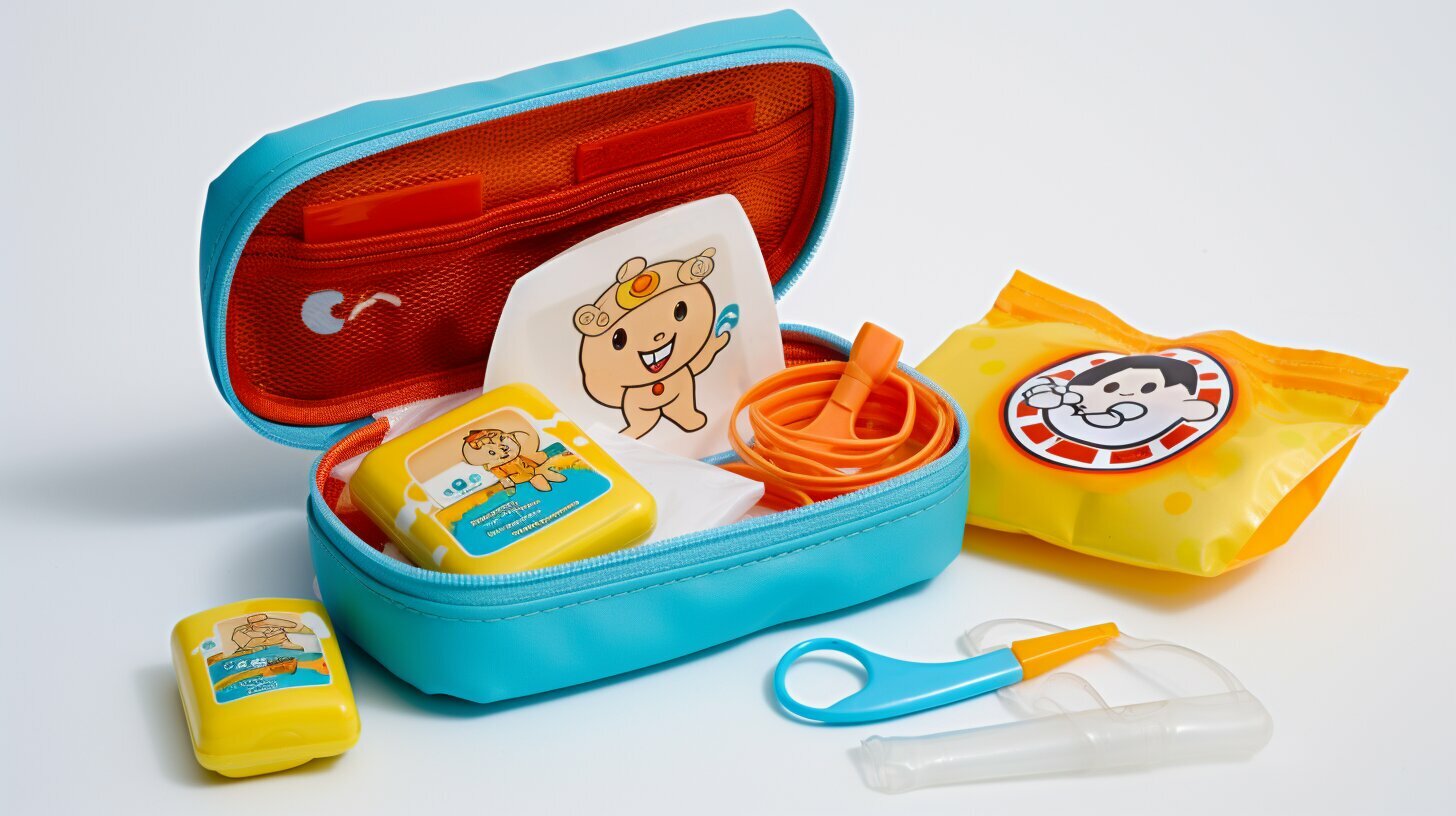As a responsible UK parent, it is crucial to have a child-safe first aid kit readily available in your home. Accidents happen, and being prepared can make all the difference when it comes to your child’s safety and well-being. This comprehensive guide will walk you through the steps of creating a child-safe first aid kit, ensuring that you have all the necessary supplies and knowledge to handle minor emergencies.
Creating a child-safe first aid kit starts with choosing the right storage location. Keep the kit locked and out of reach of children in a cool, dry place. This will ensure that the items remain intact and in good condition when you need them most.
The key to a well-stocked child-safe first aid kit is having the right supplies. Include essentials such as plasters of various sizes, sterile gauze dressings, eye dressings, bandages, safety pins, gloves, tweezers, scissors, cleansing wipes, tape, and a thermometer. These items will help you address minor cuts, wounds, and other common injuries.
In addition to the basics, it’s important to include additional items that can come in handy. Consider including skin rash cream, insect bite relief, antiseptic cream, painkillers suitable for children, antihistamine, distilled water for wound cleaning, and eye wash. These supplies can provide extra comfort and aid in specific situations.
For parents of babies, a separate baby first aid kit is recommended. It should include a first aid manual, plasters, bandages, adhesive tape, gauze dressings, scissors, tweezers, antiseptic wipes, ice packs, eyebath, saline solution, and a thermometer. These items cater to the specific needs of addressing common baby-related injuries.
While medicines can be included in the first aid kit, it’s crucial to consult with a doctor for suitable options for babies. Pain and fever relief, antiseptic cream, antihistamine cream, and calamine lotion are commonly recommended. Always follow the instructions provided and ensure that the medicines are within their expiration dates.
Maintaining your child-safe first aid kit is equally important. Regularly check the kit for expired items and replace them as needed. Keep a first aid manual or instruction booklet handy to refresh your memory on how to handle different situations. By regularly restocking and updating your kit, you can stay well-prepared for any potential emergency.
Remember, a child-safe first aid kit is only one part of the equation. Knowing when to seek medical help and when to call emergency services is equally vital. If you encounter a serious situation that requires immediate attention, don’t hesitate to seek medical assistance.
By following this essential guide, UK parents can create a child-safe first aid kit that provides peace of mind and the necessary tools to handle minor emergencies. Stay prepared, stay safe, and keep your child’s well-being a top priority.
Importance of a Child-Safe First Aid Kit
A child-safe first aid kit is a vital tool for UK parents in preventing and addressing common childhood injuries. Accidents and injuries can happen at any time, and having the right safety items and emergency supplies readily available can make a significant difference in providing immediate care.
By having a well-stocked first aid kit, parents can quickly attend to minor cuts, bruises, burns, or bug bites before seeking medical help if necessary. It helps to create a sense of preparedness and ensures prompt action in times of need. Moreover, a child-safe first aid kit can also aid in preventing further complications and reducing the severity of an injury.
Key items that should be included in a child-safe first aid kit are plasters of various sizes, sterile gauze dressings, eye dressings, bandages, safety pins, gloves, tweezers, scissors, cleansing wipes, tape, a thermometer, and more. These essentials cater to different types of injuries and are designed to be safe for children to use. Additionally, including additional items such as skin rash cream, insect bite relief, antiseptic cream, and painkillers suitable for children can further enhance the effectiveness of the first aid kit.
Remember, regularly checking and replenishing the first aid kit is essential to ensure that all items are fresh, up-to-date, and ready to use. Expired items should be promptly replaced, and it’s helpful to have a first aid manual or instruction booklet to guide parents in providing the necessary care. By maintaining a child-safe first aid kit, parents can have peace of mind knowing that they are well-prepared to handle any minor emergencies that may arise.

| Essential Items for a Child-Safe First Aid Kit |
|---|
| Plasters of various sizes |
| Sterile gauze dressings |
| Eye dressings |
| Bandages |
| Safety pins |
| Gloves |
| Tweezers |
| Scissors |
| Cleansing wipes |
| Tape |
| Thermometer |
| Skin rash cream |
| Insect bite relief |
| Antiseptic cream |
| Painkillers suitable for children |
| Antihistamine |
| Distilled water for wound cleaning |
| Eye wash |
Essential Items for a Child-Safe First Aid Kit
When creating a child-safe first aid kit, it is crucial to include a range of essential items that can address common injuries and emergencies. These items can help parents provide immediate care and comfort to their children while waiting for professional medical help. Here are some key items that should be included in a child-safe first aid kit:
- Plasters: These adhesive strips come in various sizes and are essential for covering minor cuts and scrapes.
- Sterile Gauze Dressings: These dressings are used to cover larger wounds and help control bleeding until medical help arrives.
- Eye Dressings: In case of eye injuries, these dressings provide protection and prevent further damage.
- Bandages: Elastic bandages are useful for supporting sprains, strains, and joint injuries.
- Safety Pins: These pins can secure bandages in place and prevent them from unraveling.
- Gloves: Disposable gloves are essential to maintain hygiene while administering first aid.
- Tweezers: Tweezers come in handy for removing splinters or debris from wounds.
- Scissors: A pair of scissors is necessary for cutting tape, clothing, or bandages.
- Cleansing Wipes: These wipes are used to clean wounds and prevent infection.
- Tape: Medical tape securely holds dressings and bandages in place.
- Thermometer: A digital thermometer can help monitor a child’s temperature during illness.
These essential items should be kept in a sturdy and portable container that is easy to access. It is recommended to have a first aid manual or instruction booklet that provides guidance on administering first aid in different situations. This will help parents feel more confident and prepared to handle minor emergencies without panic. Remember to regularly check the kit for expired items and replace them as needed, ensuring that the first aid kit is always well-stocked and ready for use.
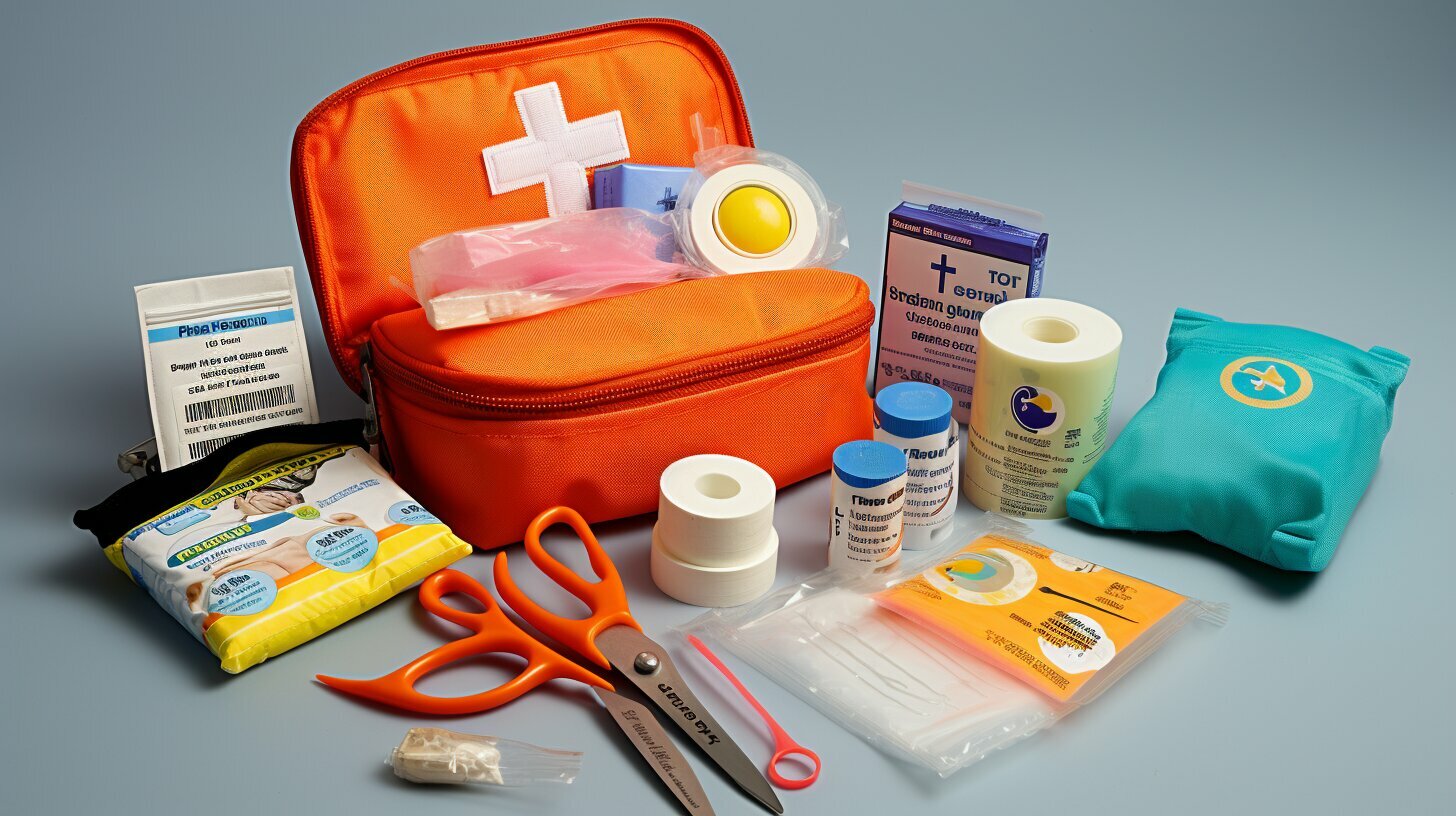
Key Items for a Child-Safe First Aid Kit
Some key items that should be included in a child-safe first aid kit are plasters, sterile gauze dressings, eye dressings, bandages, and safety pins. These items are essential for treating minor cuts, scrapes, and wounds. Plasters of various sizes are necessary to cover and protect wounds, while sterile gauze dressings and eye dressings are used for larger wounds or injuries to the eye area. Bandages and safety pins are important for securing dressings and providing support to injured limbs.
Gloves should also be included in the first aid kit to ensure proper hygiene during any wound care procedure. Tweezers are useful for removing splinters or foreign objects from the skin. Scissors are necessary for cutting bandages or clothing to access the affected area. Cleansing wipes are crucial for cleaning wounds and preventing infection. Tape is essential for securing dressings or bandages in place.
Finally, a thermometer is an important tool for monitoring a child’s temperature. It is essential for determining if a child has a fever, which can be an indicator of an underlying illness or infection. Having a thermometer in the first aid kit allows parents to quickly assess their child’s condition and take appropriate action.
| Key Items | Function |
|---|---|
| Plasters | Cover and protect wounds |
| Sterile gauze dressings | Treat larger wounds |
| Eye dressings | Address eye injuries |
| Bandages | Support injured limbs |
| Safety pins | Secure dressings |
| Gloves | Maintain hygiene |
| Tweezers | Remove splinters or foreign objects |
| Scissors | Cut bandages or clothing |
| Cleansing wipes | Clean wounds |
| Tape | Secure dressings or bandages |
| Thermometer | Monitor temperature |

Remember, having these key items in your child-safe first aid kit is crucial for providing immediate care and relief to your child in case of minor injuries or emergencies. It is important to regularly check and replenish your kit, ensuring that all items are within their expiry dates and in good condition. By being well-prepared, you can ensure the safety and well-being of your child at all times.
Additional Items for a Child-Safe First Aid Kit
Besides the essential items, it is also beneficial to include additional items like skin rash cream, insect bite relief, and antiseptic cream in your child-safe first aid kit. These items can provide relief for common ailments and help soothe minor skin irritations. In the case of a skin rash, a cream specifically formulated for that purpose can reduce discomfort and promote healing. Similarly, insect bite relief can alleviate itching and swelling caused by mosquito or other insect bites.
Antiseptic cream is another valuable addition to your first aid kit. It can be used to clean and disinfect cuts, grazes, and other minor wounds, reducing the risk of infection. Painkillers suitable for children can help alleviate minor aches and pains, such as headaches or muscle sprains.
It’s also important to include antihistamine in your first aid kit, especially if your child has known allergies. This medication can provide relief from allergic reactions, such as hay fever or insect bites, by reducing symptoms like sneezing, runny nose, and itching.
Distilled water for wound cleaning and eye wash can be useful items to keep in your first aid kit. Distilled water is sterile and can be used to cleanse wounds, helping to remove debris and prevent infection. Eye wash can be used to gently irrigate the eyes in case of foreign objects or irritants. Remember to always follow proper instructions for the use of any medication or solution in your first aid kit.
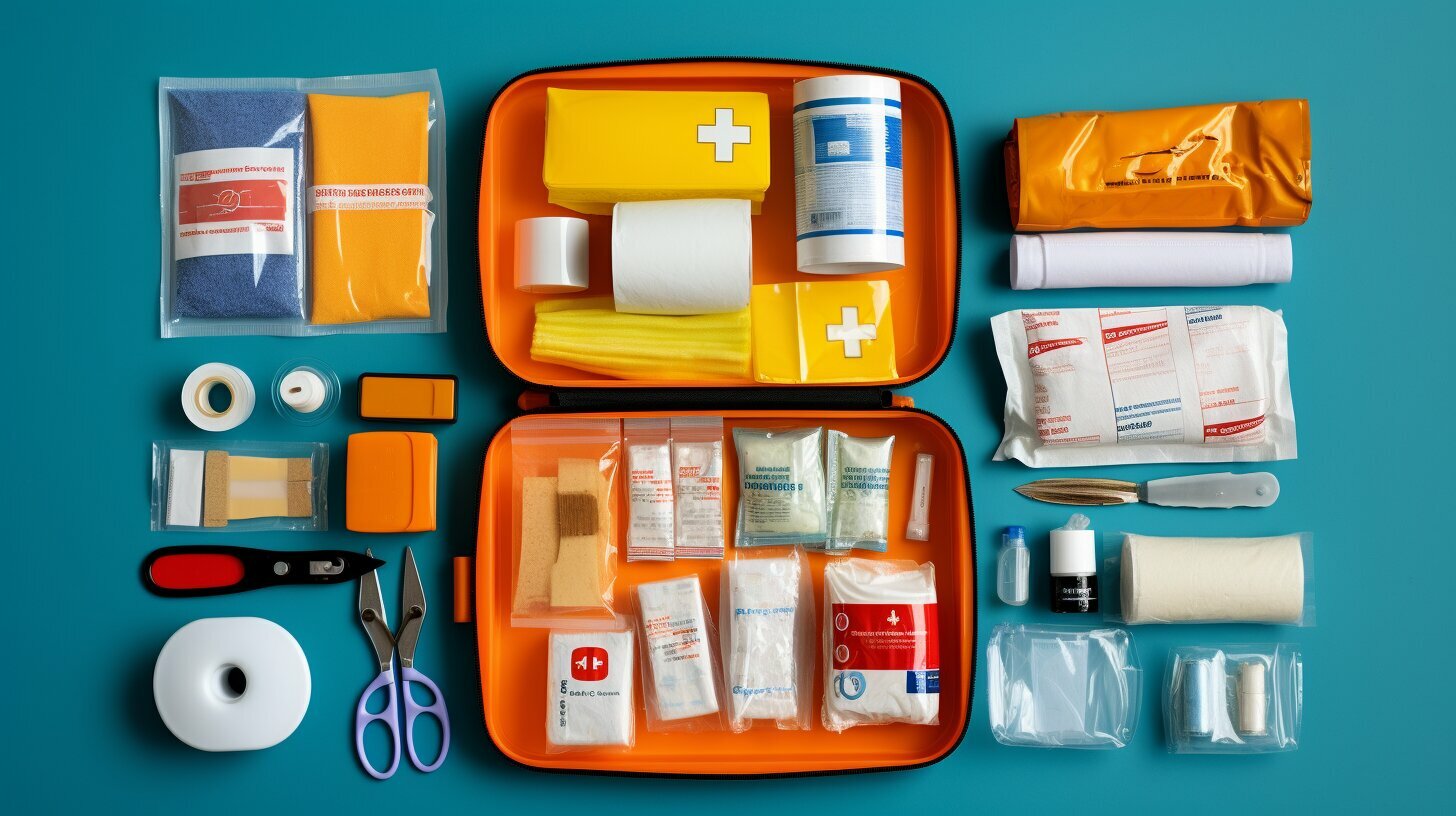
- Skin rash cream, insect bite relief, and antiseptic cream are beneficial additions to a child-safe first aid kit.
- Painkillers suitable for children can help alleviate minor aches and pains.
- Antihistamine can provide relief from allergic reactions.
- Distilled water and eye wash are useful for wound cleaning and eye irrigation.
| Item | Use |
|---|---|
| Skin rash cream | Relieves discomfort and promotes healing for skin rashes. |
| Insect bite relief | Alleviates itching and swelling caused by insect bites. |
| Antiseptic cream | Cleanses and disinfects minor wounds. |
| Painkillers suitable for children | Alleviates minor aches and pains. |
| Antihistamine | Provides relief from allergic reactions. |
| Distilled water for wound cleaning | Sterile water for cleansing wounds. |
| Eye wash | Irrigates the eyes in case of foreign objects or irritants. |
Importance of Regularly Checking and Replenishing the First Aid Kit
To ensure the effectiveness of your child-safe first aid kit, it is crucial to regularly check and replenish its contents. By doing so, you can be confident that your kit is always well-stocked and prepared to handle any minor emergencies that may arise.
A key component of maintaining a child-safe first aid kit is having a reliable first aid manual or instruction booklet. This resource will provide you with the necessary guidance and step-by-step instructions on how to administer basic first aid treatments. It’s important to read and familiarize yourself with the manual, ensuring that you are well-equipped to handle any situation.
In addition to having a comprehensive guide, regularly checking the items in your first aid kit is essential. Take the time to inspect each item, ensuring that it is still within its expiry date and in good condition. Expired items should be promptly replaced to maintain the efficacy of your kit.
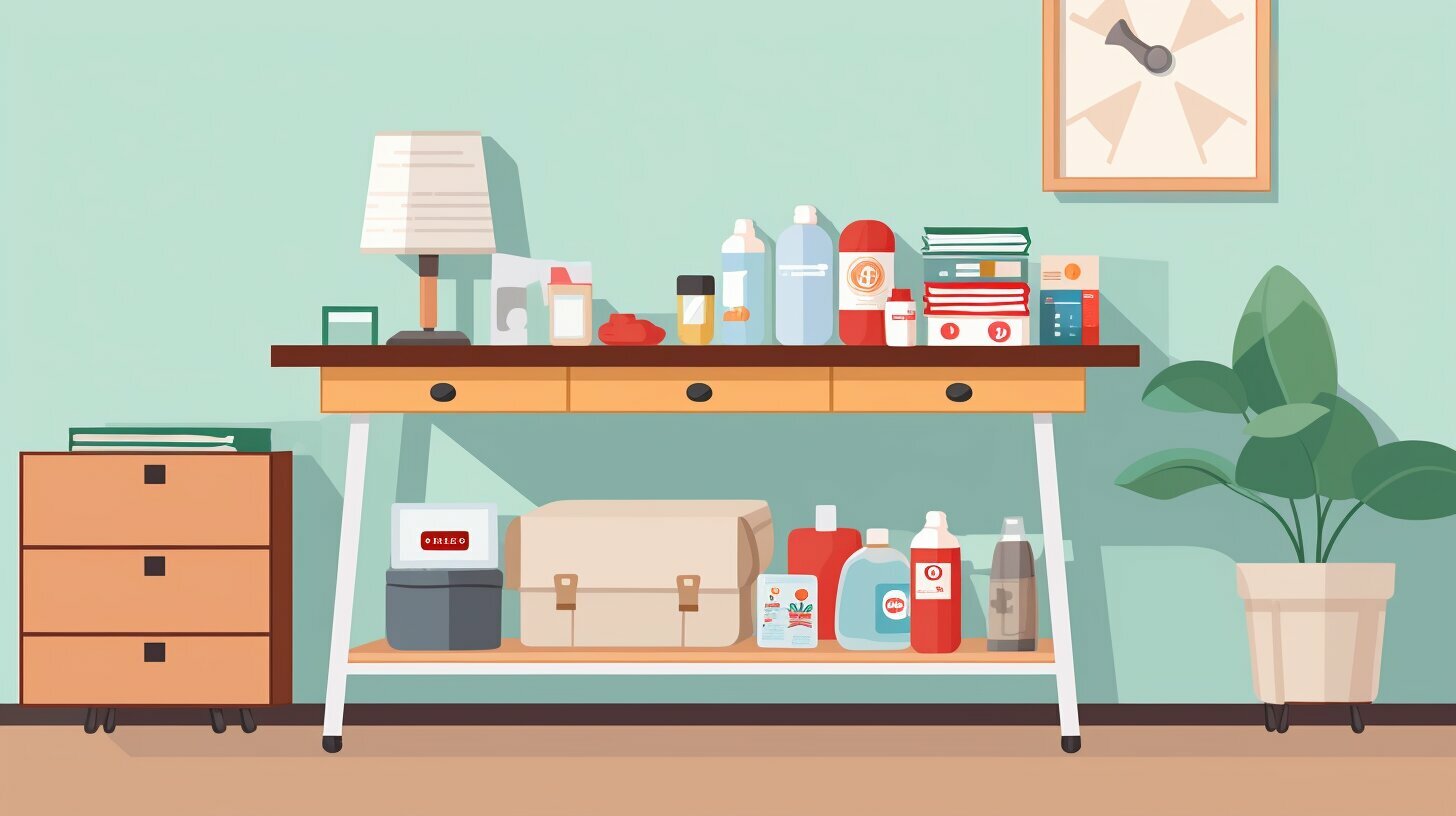
By conducting regular checks and replenishing your child-safe first aid kit, you are taking proactive measures to protect the well-being of your child. Remember, accidents can happen at any time, so it is always better to be prepared than caught off guard. Keep your first aid kit in a cool, dry place, out of the reach of children, and make it a habit to regularly inspect and restock its contents.
| Items to Check and Replenish: | Frequency: |
|---|---|
| Plasters, sterile gauze dressings, bandages | Monthly |
| Eye dressings, safety pins, gloves, tweezers | Every 3 months |
| Scissors, cleansing wipes, tape | Every 6 months |
| Thermometer, skin rash cream, insect bite relief | Yearly |
| Antiseptic cream, painkillers suitable for children, antihistamine | Yearly |
| Distilled water for wound cleaning, eye wash | Yearly |
Baby First Aid Kit Essentials
If you have a baby, it is important to have a separate first aid kit that includes specific essentials to address common baby-related injuries. Keeping your little one safe and prepared for minor emergencies is crucial, and having the right supplies on hand can make all the difference. Here is a list of essential items to include in your baby first aid kit:
- First Aid Manual: A comprehensive guide that provides step-by-step instructions for handling various situations and administering first aid.
- Plasters: Assorted sizes of adhesive bandages to cover small cuts or scrapes.
- Bandages: Elastic bandages to secure dressings or apply pressure to wounds.
- Adhesive Tape: Medical tape for securing dressings or splints.
- Gauze Dressings: Sterile gauze pads or rolls to cover larger wounds or control bleeding.
- Scissors: Rounded-tip scissors for safely cutting tape or clothing during emergencies.
- Tweezers: For removing splinters or foreign objects from the skin.
- Antiseptic Wipes: Disposable wipes to clean wounds and prevent infection.
- Ice Packs: Instant cold packs to reduce swelling or soothe bumps and bruises.
- Eyebath: A small container for rinsing eyes in case of irritation or foreign particles.
- Saline Solution: Sterile solution for cleaning wounds or rinsing eyes.
- Thermometer: Essential for monitoring your baby’s temperature during illness or fever.
Having these supplies readily available can give you peace of mind knowing that you are prepared for any unexpected situations that may arise. Remember to regularly check your first aid kit for expired items and restock as needed. Keep the kit in a cool, dry place out of the reach of children to ensure its effectiveness when it’s needed most.
| Item | Use |
|---|---|
| First Aid Manual | Provides instructions for various first aid situations |
| Plasters | Cover small cuts or scrapes |
| Bandages | Secure dressings or apply pressure to wounds |
| Adhesive Tape | Secure dressings or splints |
| Gauze Dressings | Cover larger wounds or control bleeding |
| Scissors | Safely cut tape or clothing during emergencies |
| Tweezers | Remove splinters or foreign objects |
| Antiseptic Wipes | Clean wounds and prevent infection |
| Ice Packs | Reduce swelling or soothe bumps and bruises |
| Eyebath | Rinse eyes in case of irritation or foreign particles |
| Saline Solution | Clean wounds or rinse eyes |
| Thermometer | Monitor your baby’s temperature |
Medicines for a Baby First Aid Kit
While it is essential to have medicines in a baby first aid kit, it is crucial to consult with a doctor to ensure they are suitable for your baby. Certain medications can provide pain and fever relief for babies, such as paracetamol or ibuprofen in appropriate dosages. However, it is important to follow medical advice and dosage instructions carefully. This will help to ensure your baby’s safety and well-being.
In addition to pain and fever relief, it may be useful to include antiseptic cream in your baby’s first aid kit. This can help protect against infections in case of minor cuts, scratches, or insect bites. Antihistamine creams can also be beneficial to soothe any allergic reactions or skin irritations your baby may experience. Calamine lotion, which is known for its soothing properties, can provide relief for conditions like heat rash or chickenpox.
Remember, always consult with a healthcare professional before adding any medications to your baby’s first aid kit. They will be able to offer guidance on suitable medicines and provide important instructions on their safe administration. It is also crucial to check the expiry dates of all medications in the kit regularly and replace any expired items promptly.
Medicines for a Baby First Aid Kit
| Medicine | Function |
|---|---|
| Pain and fever relief | Provides relief from pain and reduces fever |
| Antiseptic cream | Prevents infection in minor cuts, scratches, or insect bites |
| Antihistamine cream | Soothes allergic reactions or skin irritations |
| Calamine lotion | Relieves conditions like heat rash or chickenpox |
Having these medicines readily available in your baby’s first aid kit can help you address minor ailments and provide temporary relief until you can seek medical advice. Remember, always prioritize your baby’s safety and consult with a healthcare professional for personalized guidance.

To ensure the longevity and effectiveness of your child-safe first aid kit, it should be stored in a cool, dry place, out of the reach of children. A locked cabinet or high shelf is ideal for keeping it safely tucked away. By storing it in a cool and dry environment, you can help prevent any moisture damage or temperature fluctuations that may affect the quality of the supplies.
Regularly checking the contents of your first aid kit is essential to ensure that all items are up to date and in good condition. Expired items should be promptly replaced to maintain the kit’s effectiveness. It’s also a good idea to periodically review the expiry dates on medications and ointments and replenish them as needed.
Restocking your first aid kit is equally important. Keep track of the supplies that have been used and make a note of any items that need to be replaced. This will help you stay prepared for any emergencies that may arise. It’s recommended to make a checklist of the essential items in your kit so that you can easily keep track of what needs to be restocked.
| Item | Quantity |
|---|---|
| Plasters of various sizes | 10 |
| Sterile gauze dressings | 5 |
| Eye dressings | 2 |
| Bandages | 4 |
| Safety pins | 6 |
| Gloves | 2 pairs |
| Tweezers | 1 |
| Scissors | 1 |
| Cleansing wipes | 10 |
| Tape | 1 roll |
| Thermometer | 1 |
By following these simple guidelines for storing and maintaining your child-safe first aid kit, you can ensure that it is always ready to tackle any minor emergencies that may occur. Regular checks, proper storage, and prompt restocking will give you peace of mind knowing that you are well-prepared to provide immediate care when needed.
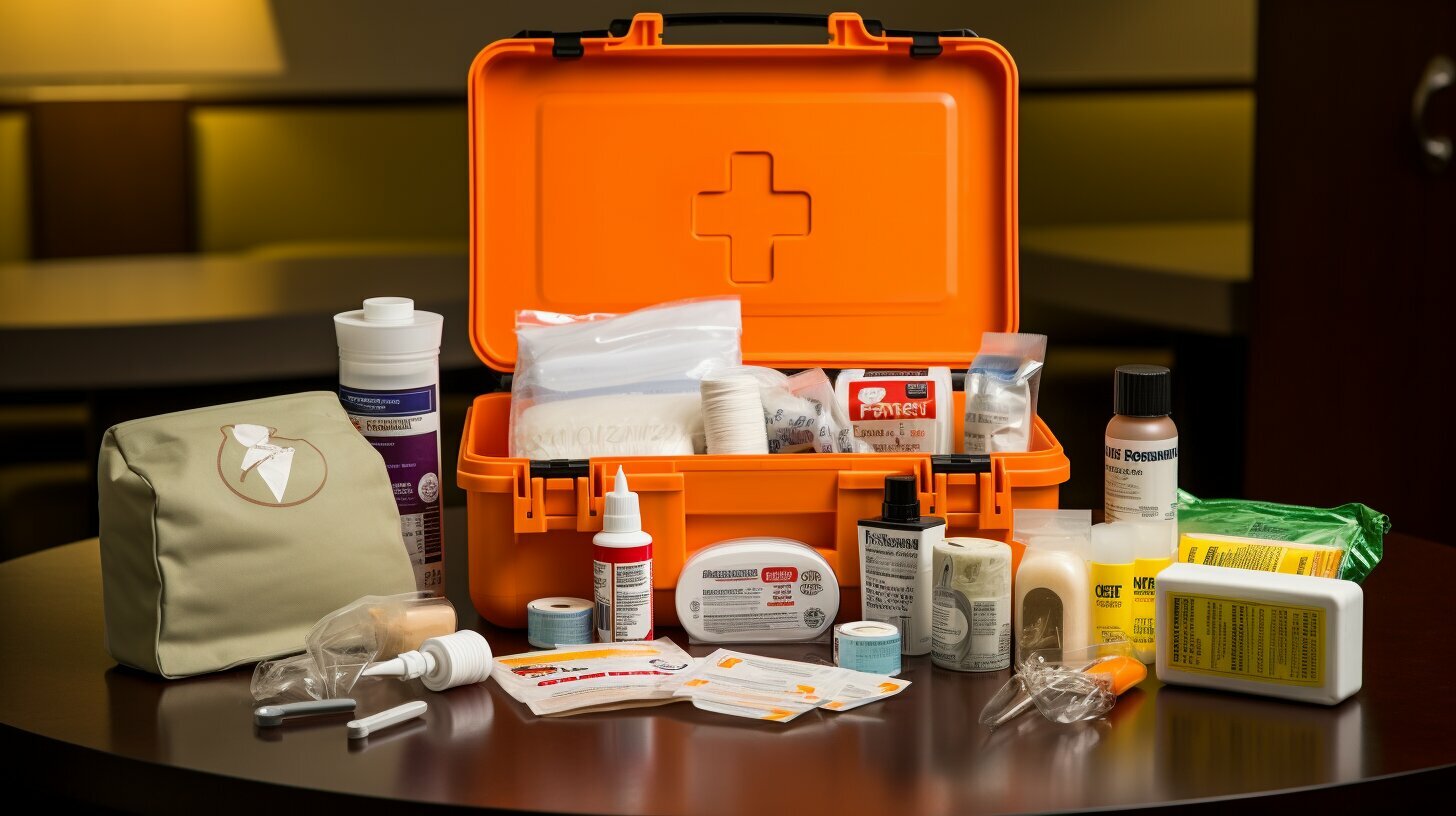
In certain situations, it is crucial to seek medical help or call emergency services for prompt and appropriate care. While many minor injuries and illnesses can be treated at home with a well-stocked first aid kit, there are instances when professional medical assistance is necessary. Here are some scenarios where seeking medical help is recommended:
- If the injury or illness is severe, such as a deep cut, broken bone, or suspected concussion, it is important to seek immediate medical attention. Emergency services should be contacted if the situation is life-threatening or requires urgent intervention.
- If there are signs of a serious allergic reaction, such as difficulty breathing, swelling of the face or throat, or severe itching, it is essential to call emergency services right away. These symptoms could indicate anaphylaxis, a severe allergic reaction that requires immediate medical treatment.
- In cases of prolonged or intense abdominal pain, chest pain, or difficulty breathing, it is recommended to seek medical help immediately. These symptoms could be indicative of a more serious underlying condition and should not be ignored.
- If a child has ingested a toxic substance, it is important to call emergency services immediately or contact a poison control center. Time is critical in these situations, and professional guidance can help mitigate the effects of the toxin.
Remember, it is always better to err on the side of caution and seek medical help when in doubt. Prompt intervention can prevent complications and ensure the well-being of your child. Keep emergency numbers readily accessible and familiarize yourself with basic first aid techniques to provide initial care before professional help arrives.

| Emergency Numbers | Available Assistance |
|---|---|
| Emergency Services (e.g., 999, 112) | Immediate response and transportation to the hospital in life-threatening situations. |
| Non-emergency NHS number (e.g., 111) | Advice and guidance on non-urgent medical concerns. |
| Local Pediatrician’s Office | Direct contact with your child’s primary healthcare provider for non-emergency medical inquiries. |
| Poison Control Center (e.g., 0800 111 999) | Immediate guidance in case of poisoning or ingestion of toxic substances. |
Conclusion
Creating a child-safe first aid kit is a crucial step for UK parents in ensuring the safety and well-being of their children. It is essential to have a well-stocked first aid kit at home, equipped with all the necessary items to handle minor emergencies. The first aid kit should be kept locked and out of reach of children in a cool, dry place.
For UK parents, the child-safe first aid kit should include a range of items to address various injuries and emergencies. Plasters of various sizes, sterile gauze dressings, eye dressings, bandages, safety pins, gloves, tweezers, scissors, cleansing wipes, tape, and a thermometer are all important components of a comprehensive first aid kit.
Additionally, it is beneficial to include items such as skin rash cream, insect bite relief, antiseptic cream, painkillers suitable for children, antihistamine, distilled water for wound cleaning, and eye wash. However, it is crucial to consult with a doctor for suitable medicines for babies and always follow their guidance.
Regularly checking and replenishing the first aid kit is of utmost importance. Expired items should be replaced promptly, and the kit should be restocked as necessary. It is also helpful to have a first aid manual or instruction booklet on hand to provide guidance in case of emergencies.
In case of more serious injuries or emergencies, it is important to seek medical help and, if necessary, call emergency services. The safety of our children should always be a top priority, and having a child-safe first aid kit is a proactive measure that UK parents can take to ensure their well-being.
